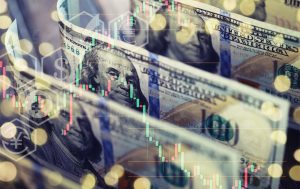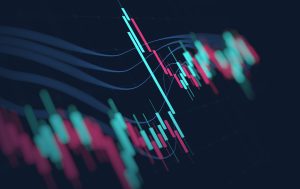U.S. President Donald Trump’s much-anticipated “Liberation Day” delivered a seismic shift in global trade dynamics, unleashing a sweeping tariff regime that reverberated across financial markets and geopolitical corridors. In a fiery announcement from the White House Rose Garden, Trump declared immediate 10% baseline tariffs on all imports to the U.S., alongside significantly higher reciprocal tariffs targeting 180 countries — with China hit hardest at 54%, the EU at 20%, Japan at 24%, and India at 26%.
Market Fallout and Currency Reactions
The immediate impact was a sharp flight to safety, with the Japanese yen appreciating to 147.94, its strongest level in three weeks, while the U.S. dollar index (DXY) dropped to a six-month low of 102.728. Investors dumped the dollar amid recession fears, rate cut speculation, and uncertainty around retaliation from global trade partners.
Meanwhile, gold surged to an all-time high of $3,167.57/oz, as traders hedged against global financial instability. The yellow metal has now gained more than 19% year-to-date, driven by tariff tensions, geopolitical shocks, and anticipation of easier monetary policy ahead.
AUD and JPY Diverge on Trade Fallout
The Australian dollar traded steadily near $0.63, showing resilience after Prime Minister Anthony Albanese clarified that Australia would not retaliate. Despite the U.S. imposing 10% tariffs across the board, Australia’s minimal export exposure to the U.S. (less than 5%) helped buffer the impact. Still, a record surge in imports and declining exports in February suggest underlying trade challenges that could weigh on AUD in the months ahead.
In contrast, the Japanese yen gained sharply, driven by its haven status and concerns over Japan’s export exposure. BOJ Governor Kazuo Ueda warned of material threats to global trade and economic growth, while emphasizing that the central bank would raise these issues at the upcoming G20 summit.
Equity Carnage and Sectoral Impact
Global equity markets reeled in the wake of the announcement. Japan’s Nikkei 225 plunged 4.6% intraday, closing down 2.8% as exporters, banks, and shipping companies were hammered by tariff fears and a surging yen. European and U.S. stock futures tumbled, while S&P 500 futures shed roughly 3% in after-hours trading, reflecting deep investor unease.
Even resilient sectors saw limited shelter. While drugmakers avoided new tariffs, broader sentiment remained risk-off, and semiconductors and automakers were punished on expectations of trade flow disruptions.
GBP, EUR Surge Amid Dollar Weakness
The British pound surged to 1.30, a six-month high, as the dollar collapsed post-announcement. UK officials stressed calm, with Minister Reynolds reaffirming the “special relationship” with the U.S. and hopes for a bilateral trade deal that could mitigate tariff exposure.
The euro climbed to a 25-week high of 1.10, buoyed by safe-haven flows and a crumbling greenback. European Commission President Ursula von der Leyen responded sharply, vowing retaliation if talks with Washington fail. The EU, she stated, is prepared to “negotiate, but not hesitate” in defending its interests.
Strategic Concerns and Recession Risks
Trump’s tariff bombshell introduces the highest average U.S. tariff burden since the 1930s, with economists warning that global trade could contract, spurring inflation and dragging down growth. Analysts at JPMorgan and Goldman Sachs downgraded their U.S. growth outlooks, citing heightened risks of a recession.
Moreover, businesses are expected to pass increased costs onto consumers, amplifying price pressures. Corporate sentiment and capital expenditure plans have already been hit, adding to the bearish macro outlook.
Conclusion: Aftershocks Just Beginning
With Trump pledging more tariffs ahead and retaliation looming, markets are bracing for sustained volatility. “There seems to be no order in the disorder,” von der Leyen remarked, echoing the growing investor sentiment: this is not the endgame, but rather the opening salvo of a deeply disruptive trade regime.
Investors must remain vigilant. With U.S. non-farm payrolls due Friday, and monetary policy paths in flux, the convergence of tariffs, inflation risk, and weakening global demand will continue to test the resilience of financial markets in Q2.



